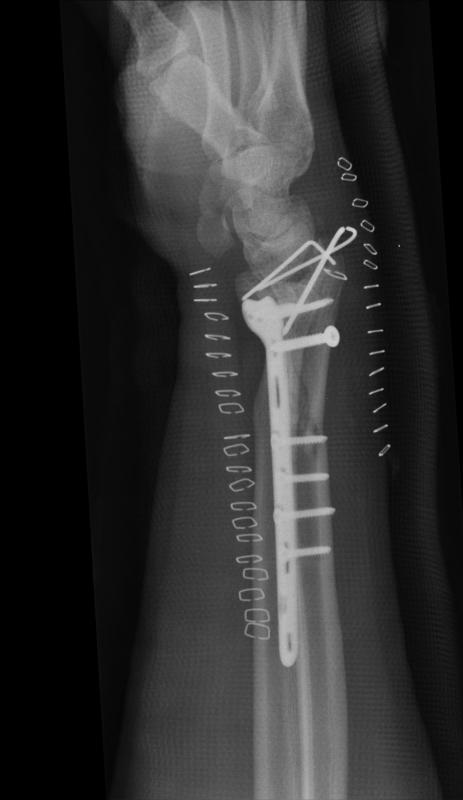At WiseGEEK, we're committed to delivering accurate, trustworthy information. Our expert-authored content is rigorously fact-checked and sourced from credible authorities. Discover how we uphold the highest standards in providing you with reliable knowledge.
What is the Taylor Spatial Frame?
The Taylor spatial frame is an external fixator consisting of a system of rings, pins, and struts used to fix fractures or deformities in the long bones. The mechanism works by stabilizing the bone fragments in 3-dimensional space and allowing new bone to grow in the interstitial spaces between fragments. Bone movement and placement is possible in both directions in three axes by twisting of one or more of the six individually adjustable struts.
At least two rings or partial rings made from medical grade titanium form the foundation of the device circling the limb above and below the fracture. Complex alignment issues may require three rings be used. The bone fragments are held in place with stainless steel (SS) pins that are embedded in the bone, exit the flesh, and then are anchored to the rings by SS bolts. Separating each ring from its neighbor are six color-coded struts that allow adjustment in six spatial directions.

The adjustable struts are the working part of the Taylor spatial frame and were the modification Charles Taylor made on the Ilizarov apparatus invented by the physician Gavril Ilizarov from the former Soviet Union. A healthy limb with normal alignment lines up perpendicularly to a Taylor spatial frame apparatus with struts in their neutral positions. An Internet program provided by the manufacturer delivers instructions for the initial strut setting and how each strut is to be shortened or lengthened at each given time period. The struts are bolted into place at the initial distorted angles and lengths. By turning the screws on the struts three or four times daily, the limb is gradually brought back into alignment and the struts are again in the neutral position.

The top and bottom pins are anchored in healthy bone tissue beyond the trauma location. The patient is generally comfortable during treatment, as there is no pressure on the fragments and the limb can soon bear weight after surgery since the weight is distributed from healthy bone, through the structure, and back to healthy bone below the fracture. The injured limb is well protected from accidental bumps by the Taylor spatial frame rings. The patient is responsible for cleaning the pin sites and moving the strut screws per instructions provided by the doctor. Treatment requires six to 12 months before the apparatus is removed.
The Taylor spatial frame is used for straightening limbs that are malformed due to birth defect, malunion, serious injury, or surgical complications. Missing bone due to severe trauma may be grown in place and full function returned to the limb. The bone in a limb sometimes must be severed prior to installation of the Taylor spatial frame. New, strong bong tissue can grow by gradually separating the ends of a severed limb to achieve an increase in length. The device is removed after the limb has stabilized, is fully weight bearing and sufficient bone growth is apparent.
AS FEATURED ON:
AS FEATURED ON:












Discuss this Article
Post your comments